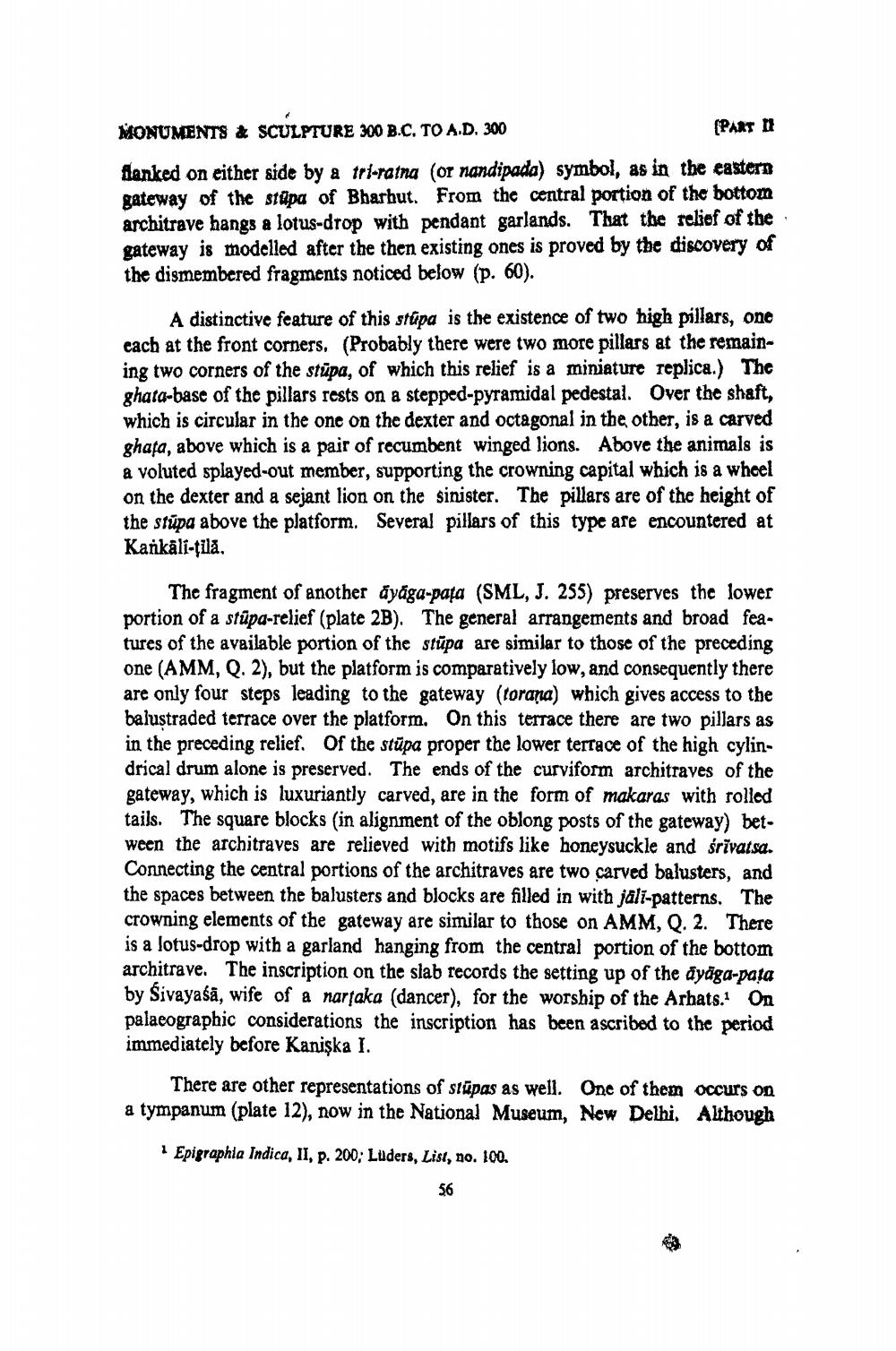________________
MONUMENTS & SCULPTURE 300 B.C. TO A.D. 300
(PART 11
flanked on either side by a tri-ratna (or nandipada) symbol, as in the eastern gateway of the stupa of Bharhut. From the central portion of the bottom architrave hangs a lotus-drop with pendant garlands. That the relief of the gateway is modelled after the then existing ones is proved by the discovery of the dismembered fragments noticed below (p. 60).
A distinctive feature of this stupa is the existence of two high pillars, one each at the front corners. (Probably there were two more pillars at the remaining two corners of the stūpa, of which this relief is a miniature replica.) The ghata-base of the pillars rests on a stepped-pyramidal pedestal. Over the shaft, which is circular in the one on the dexter and octagonal in the other, is a carved ghafa, above which is a pair of recumbent winged lions. Above the animals is a voluted splayed-out member, supporting the crowning capital which is a wheel on the dexter and a sejant lion on the sinister. The pillars are of the height of the stúpa above the platform. Several pillars of this type are encountered at Kankāli-tila,
The fragment of another ayaga-pata (SML, J. 255) preserves the lower portion of a stūpa-relief (plate 2B). The general arrangements and broad features of the available portion of the stúpa are similar to those of the preceding one (AMM, Q. 2), but the platform is comparatively low, and consequently there are only four steps leading to the gateway (torana) which gives access to the balustraded terrace over the platform. On this terrace there are two pillars as in the preceding relief. Of the stūpa proper the lower terrace of the high cylindrical drum alone is preserved. The ends of the curviform architraves of the gateway, which is luxuriantly carved, are in the form of makaras with rolled tails. The square blocks (in alignment of the oblong posts of the gateway) between the architraves are relieved with motifs like honeysuckle and śrīvatsa. Connecting the central portions of the architraves are two carved balusters, and the spaces between the balusters and blocks are filled in with jali-patterns. The crowning elements of the gateway are similar to those on AMM, Q. 2. There is a lotus-drop with a garland hanging from the central portion of the bottom architrave. The inscription on the slab records the setting up of the dyäga-pata by Sivayaśā, wife of a nartaka (dancer), for the worship of the Arhats. On palaeographic considerations the inscription has been ascribed to the period immediately before Kaniska I.
There are other representations of stūpas as well. One of them occurs on a tympanum (plate 12), now in the National Museum, New Delhi, Although
* Epigraphia Indica, II, p. 200; Luders, List, no. 100.
56




